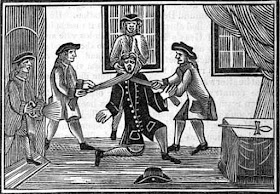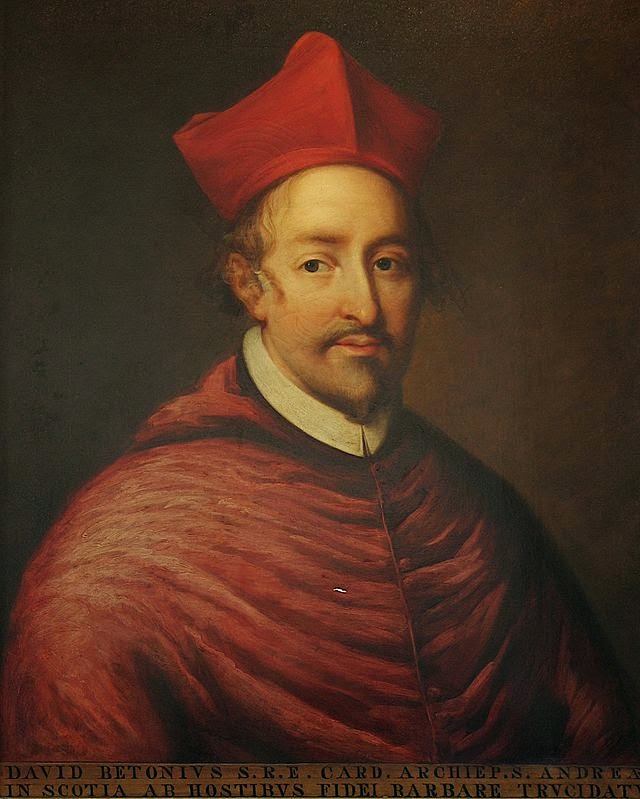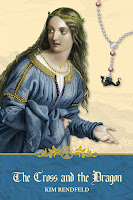Allow me to introduce you to Margaret, Countess of Norfolk and Earl Marshal of England. Not that I can offer you any pics, as this lady lived in an age where the committing of faces to oil and canvas was rarely done - and if it was, the depicted faces were usually male and royal. Mind you, Margaret was royal - in the sense that she was the granddaughter of Edward I. But seeing as her mother was a commoner, I'm thinking Margaret's claim to royalty would have been considered somewhat weak by her contemporaries.
Margaret's father was Thomas of Brotherton, the eldest son in Edward I's second marriage to Princess Margaret of France. As described in a previous post, Thomas is mostly remembered as being an unexceptional sort of man, and in many ways this is because his life is so eclipsed by that of his daughter. Truth be told, Thomas' life was pretty much eclipsed by most of his contemporaries - which in itself does not mean he was unexceptional, but there you are.
Margaret was named for her grandmother, a lady who must have been quite something else. Married to Edward I, a man well over 40 years her senior - and a man who by all accounts remained very devoted to his first wife, even after her death - she managed to create a happy home for her new husband and give him three children to brighten his old age.
Edward I died while the children of his second marriage were still very small, and Thomas grew to manhood in an England very much defined by the constant conflict between Edward II and his disgruntled barons. Without going into too much detail here about Edward II and the invasion that led to him losing his crown, let us say that Margaret's childhood saw just as exciting times. Her cousin, Edward III, was crowned in 1327 - a boy under the control of his mother and her lover, Lord Mortimer - and her father was probably a tad disgruntled at how high Mortimer was rising.
 |
| Medieval marriage |
Margaret knew none of this. By the time she was old enough to understand, Mortimer was dead - as was her mother. Some years later, in 1338, Thomas Brotherton died as well, leaving his two daughters as his heiresses (his son had predeceased him). Margaret, who became the Countess of Norfolk and Earl Marshal upon her father's death, was by then already married, to a man called John Segrave, and she was to have several children by him until one day, in 1350, she sought a divorce from him. Yup. A divorce.
Margaret was at the time around thirty, and she argued for a divorce based on the fact that she'd been too young to consent to the marriage when she was originally married. Seeing as that was fifteen years ago, and seeing as there'd been quite a few children, one can't help but wonder why she chose this moment in time to demand her marital freedom. Was there perhaps a sniff of illicit love in the air?
 |
| "What sort of nonsense is this? A divorce?" "It's not you, honey. It's me." |
Edward III was incensed and set up an inquiry into the events of Margaret crossing the channel despite his prohibition. Meanwhile, the ecclesiastic courts took their time, Margaret tapped her foot, and poor John Segrave must have felt like an utter fool. It probably came as something of a relief for everyone but John when he died in 1353, thereby making the whole ongoing divorce procedure moot. No sooner was John cold in his grave, but Margaret hastened to marry her Walter, without consent from the king. Her royal cousin had a major fit, but there was little he could do after the fact, and Margaret seems to have been one of those people capable of charming the birds from the trees, so soon enough she was reconciled with dear cousin Edward and went on to have 18 happy years and three children with Walter.
While Margaret may have been fortunate in her second husband, she was less fortunate as a mother. Of the four children she bore her first husband, only one, a daughter, was alive at the time of her second marriage. And as to the children she bore Walter, the precious son drowned in a well at the age of ten, leaving two more daughter, one of whom was to die relatively young. So, all those children, and only two girls to marry and have issue - preferably a male heir who could inherit not only the earldom of Norfolk, but also the hereditary title of Earl Marshal.
 |
| Edward III and his equally martial son |
The title of Earl Marshal, however, was one Margaret held on to. Not so much for herself, but for all those future heirs to whom it could be of value to have such an exalted office to claim as their own. (And as an aside, her tenaciousness paid off, as the present day Duke of Norfolk is not only her distant descendant but also Earl Marshal) Problem was, as Margaret grew older, all those future heirs took their time coming. Her surviving daughter from her first marriage married John Mowbray and died in 1368 leaving behind two very young sons. Her surviving daughter from her second marriage also had a son - who died before the age of eight. The hopes for a male heir now rested on little John and Thomas Mowbray.
Despite the loss of children and grandchildren - plus the death of Walter in 1372 - Margaret lived on, testament to those long-lived Plantagenet genes. In 1383, she was around to witness yet another death - that of John Mowbray junior - and now the number of male heirs was down to one. At the time, young Thomas Mowbray was seventeen or so, as yet without issue. This, one presumes, made Margaret a tad antsy.
 |
| Thomas Mowbray being created earl |
In 1397, when she was well over seventy, Margaret was created Duchess of Norfolk for life - the first ever woman so honoured. And when she died, in 1399, her grandson, Thomas Mowbray, became the first Duke of Norfolk. Not that it helped him much, as at the time he was living in exile, this as a consequence of having quarrelled publicly with Henry of Bolingbroke as to which one of them was responsible for the murder of Thomas of Woodstock. He was to die of the plague in Venice, leaving his fourteen-year-old son to inherit his titles and lands.
By then, Margaret was no longer in a position to care. Throughout her long life, she'd done what she could to safeguard the interests of her family, but now it was up to the living to do their bit. She deserved her rest, to lie undisturbed in her tomb and dream the dreams of the dead.
(all pictures in the public domain)
~~~~~~~~~~~
Had Anna been allowed to choose, she’d have become a professional time-traveller. As such a profession does not exist, she became a financial professional with two absorbing interests, namely history and writing.
Presently, Anna is hard at work with The King’s Greatest Enemy, a series set in the 1320s featuring Adam de Guirande, his wife Kit, and their adventures and misfortunes in connection with Roger Mortimer’s rise to power. And yes, Hugh Despenser plays a central role.The first book, In The Shadow of the Storm was published in 2015, the second, Days of Sun and Glory, was published in July 2016.
When Anna is not stuck in the 14th century, she's probably visiting in the 17th century, specifically with Alex and Matthew Graham, the protagonists of the acclaimed The Graham Saga. This is the story of two people who should never have met – not when she was born three centuries after him.
More about Anna on her website or on her blog!
More about Anna on her website or on her blog!



























_-_Google_Art_Project.jpg)










